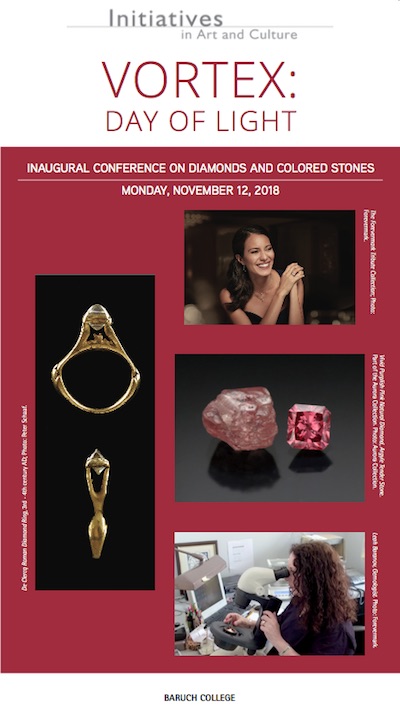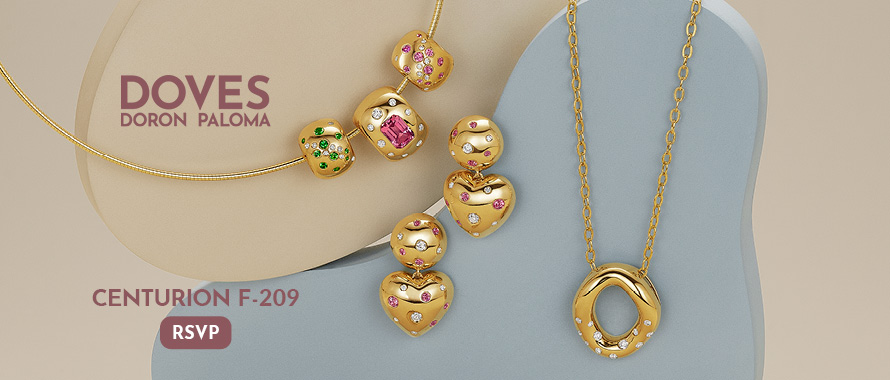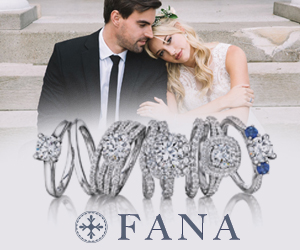Sales Strategy
Story Selling: Influencing Your Customers To Remember And Repeat Your Stories | December 05, 2018 (1 comment)

New York, NY—Nothing is more compelling than storytelling. More than the latest buzzword in marketing, it truly is the way to connect with customers and create more sales, whatever business you’re in.
At the recent Vortex: Day of Light diamond and gemstone conference hosted by Initiatives in Art & Culture, longtime industry sales expert Janice Mack Talcott of Janice Mack & Associates, described how storytelling becomes “story selling.”
A former instructor at GIA, Talcott taught diamond identification classes in small towns across the United States. What she remembers most is the passion jewelers had around the beauty of the gems they were studying.
“I talk a lot about ‘clienteling.’ But to me, that means your clients telling other people. You get new clients in one of two ways: you can do a lot of marketing or you can get your clients to talk about you to their friends.”
Marketing typically gets a small percentage of return on cash spent, but when you give your clients a good experience, good clients beget other good clients, said Talcott.
“Stories will be lost if they’re not told,” she said, illustrating her own father, who grew up in North Dakota farm country during the Depression. Like many fellow struggling farmers, he went into WWII and after the war used the GI Bill to become a watchmaker. He went to work for a local jeweler, took the GIA correspondence courses, and eventually bought the store—later expanding to four stores and providing an upper middle class lifestyle for his wife and 13 children.
But when Talcott was working at GIA doing a lot of writing, her father asked her to publish his life story. He handed her 12 handwritten chapters, starting from age four through his time in the war where, as a pilot, he was shot down over enemy lines in Germany. He limped his plane to Belgium where the underground resistance saved him. In his memoirs, he chronicled every single mission he flew, who went, and who came back.
“The point is that if you don’t keep your stories, they will be lost. It includes knowing and learning and repeating memories about beautiful gems and jewelry and designers that we have as part of our industry,” said Talcott.
“Storyselling is about you, your business, and your products. It is weaving personal history or fabric into whatever product you have. If there’s a story behind how you source, tell it! The magic of relating info to your client is so they believe you, remember you, and repeat you!” she stressed.
Think about the impact of the story, she said. A good storyteller can even impact someone’s heartbeat through emotion. People think when they’re selling a diamond they have to relate the Four C’s, but that’s data driven and dry. It’s a recitation, not animation.
“But stories grab attention. Any time you say ‘once upon a time,’ especially if you say ‘in a land far away,’ you get someone’s attention,” she said. What you know in a land far away becomes what you know about sourcing and it becomes part of a story. For example, Sri Lanka has great tea, so talk about that and all the other gems from there!”
The typical selling process goes “greet, inquire, show, close.” But storytelling engages the senses, such as a velvety Kashmir sapphire, which looks like velvet would feel. Or a spinel would look like a fragrant hibiscus. Or a fancy vivid intense yellow diamond would taste like a lemon drop.
“Customers don’t understand the value of one product over another. The salesperson has to present a reason to buy!”
Selling is a dance in two parts, Talcott explained. The welcome, when you engage with the customer, is when trust is set in. They’re not going to tell you what they want unless you develop that part. It’s not “hihowarya?” It’s really breaking down a barrier. Men typically are more focused and don’t want to spend more time in the store than they have to—so ask “what brings you in today?” and take your cues from there—whereas women engage and chat about a variety of topics, not all jewelry.
“A man is going to take you there after a little bit of bantering. The first question is what leads to the end of the sale. Whenever you inquire about what brings him in is not what he wants to buy but what he wants to get out of sale. Once you have some direction and present something, they might say ‘that’s not it, I was looking for XYZ,’ what you’re really doing in the customer’s mind is trying to help them fill a need.”
Weaving your brand is always part of telling your stories, says Talcott. Brands are just names, so any time you have the opportunity to offer your (or any) brand, have a story to offer with it.
“Anyone in any Tiffany store can pull out any product and tell a story about it. Hearts On Fire went from being a small diamond brand to being sold to Chow Tai Fook.
“If you have designers, you should have everyone on your staff know their profile, their inspiration, what their motifs are, what metals work in, et cetera. If you do custom design and do the whole process, that’s a story itself! Every time you create something from birth to completion in the manufacturing process, it’s easy to document every step and make a book of it to present to the customer.
When you ask what the customer wants, you’re trying to figure out what the end result is going to be. Eventually you get to point where you close the sale, but it’s not the close that’s important. What’s important is that they had the experience and that’s what they remember. That’s how the continuum of developing clientele goes, with stories woven through every single part.”

The Inaugural Vortex: Day Of Light conference on diamonds and colored stones was hosted by Initiatives in Art and Culture.






